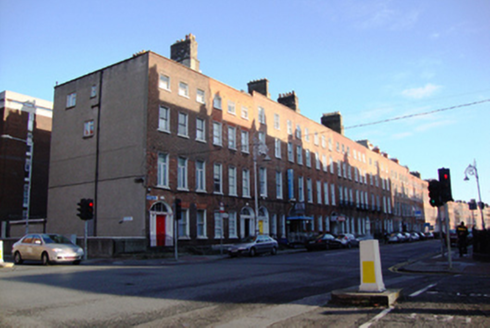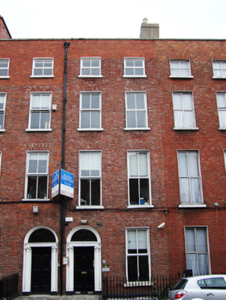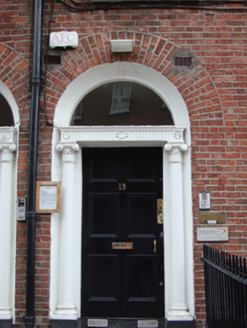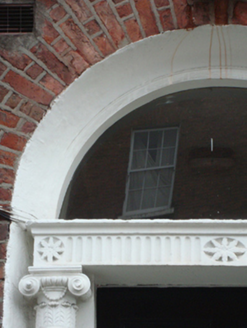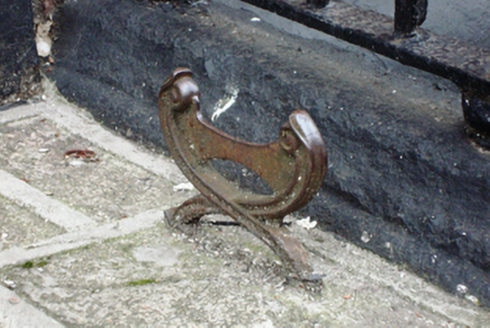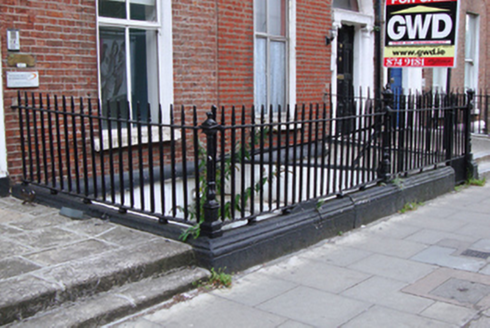Survey Data
Reg No
50010861
Rating
Regional
Categories of Special Interest
Architectural, Artistic
Original Use
House
In Use As
Apartment/flat (converted)
Date
1790 - 1810
Coordinates
315901, 235413
Date Recorded
10/10/2011
Date Updated
--/--/--
Description
Terraced two-bay four-storey house over exposed basement, built c.1800, now in commercial office use. Flat roof shared with adjoining house to west, hidden behind rebuilt parapet wall with granite coping and cast-iron hopper and downpipe breaking through to west end. Stepped rendered chimneystacks with clay pots to east party wall. Red brick walls laid in Flemish bond with cement repairs, and walling above top floor windows rebuilt, set on cement plinth course over rendered basement walls. Yellow brick walls laid in English garden wall bond to rear elevation with rendered parapet. Gauged brick flat-arched window openings with patent rendered reveals, painted granite sills and replacement timber casement windows, with three-over-three pane window to basement. Gauged brick round-headed door opening with inset painted masonry Ionic doorcase. Replacement flat-panelled timber door flanked by engaged Ionic columns on plinth blocks supporting fluted lintel cornice and plain fanlight. Door opens onto shared granite platform with cast-iron bootscraper and two granite steps bridging basement. Platform and basement enclosed by original wrought-iron railings and cast-iron corner posts on moulded granite plinth wall.
Appraisal
This Georgian townhouse forms part of an extensive terrace lining the north side of Gardiner Place, as laid out by Luke Gardiner II c.1790, linking Parnell Square to Mountjoy Square. The uniformity of scale and design is particularly striking on this streetscape with the original doorcases gently punctuating the rhythm. The classical doorcase is the decorative focus of the building. The retention of the granite entrance landing and steps, and of the stone plinth wall and iron railings and gate to the basement area completes the setting. The house is a significant component in an important Georgian terrace and the whole contributes to the strong historic architectural character of this district.
